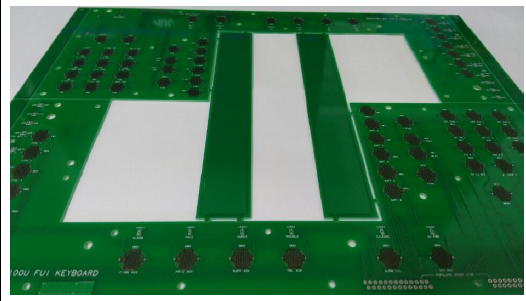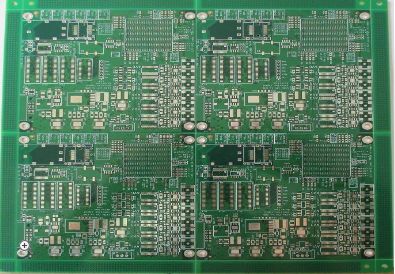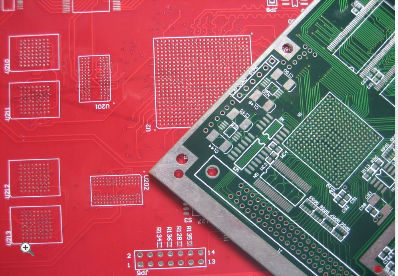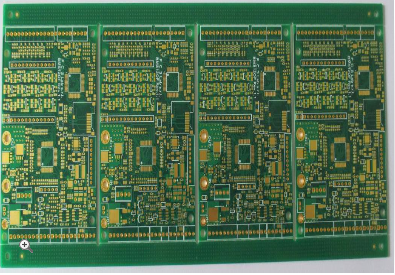-
 Agriculture
Agriculture
-
 Health-Care
Health-Care
-
 Environment
Environment
-
 Construction-Real-Estate
Construction-Real-Estate
-
 Tools-Hardware
Tools-Hardware
-
 Home-Garden
Home-Garden
-
 Furniture
Furniture
-
 Luggage-Bags-Cases
Luggage-Bags-Cases
-
 Medical-devices-Supplies
Medical-devices-Supplies
-
 Gifts-Crafts
Gifts-Crafts
-
 Sports-Entertainment
Sports-Entertainment
-
 Food-Beverage
Food-Beverage
-
 Vehicles-Transportation
Vehicles-Transportation
-
 Power-Transmission
Power-Transmission
-
 Material-Handling
Material-Handling
-
 Renewable-Energy
Renewable-Energy
-
 Safety
Safety
-
 Testing-Instrument-Equipment
Testing-Instrument-Equipment
-
 Construction-Building-Machinery
Construction-Building-Machinery
-
 Pet-Supplies
Pet-Supplies
-
 Personal-Care-Household-Cleaning
Personal-Care-Household-Cleaning
-
 Vehicle-Accessories-Electronics-Tools
Vehicle-Accessories-Electronics-Tools
-
 School-Office-Supplies
School-Office-Supplies
-
 Packaging-Printing
Packaging-Printing
-
 Mother-Kids-Toys
Mother-Kids-Toys
-
 Business-Services
Business-Services
-
 Commercial-Equipment-Machinery
Commercial-Equipment-Machinery
-
 Apparel-Accessories
Apparel-Accessories
-
 Security
Security
-
 Shoes-Accessories
Shoes-Accessories
-
 Vehicle-Parts-Accessories
Vehicle-Parts-Accessories
-
 Jewelry-Eyewear-Watches-Accessories
Jewelry-Eyewear-Watches-Accessories
-
 Lights-Lighting
Lights-Lighting
-
 Fabric-Textile-Raw-Material
Fabric-Textile-Raw-Material
-
 Fabrication-Services
Fabrication-Services
-
 Industrial-Machinery
Industrial-Machinery
-
 Consumer-Electronics
Consumer-Electronics
-
 Electrical-Equipment-Supplies
Electrical-Equipment-Supplies
-
 Electronic-Components-Accessories-Telecommunications
Electronic-Components-Accessories-Telecommunications
-
 Home-Appliances
Home-Appliances
-
 Beauty
Beauty
-
 Chemicals
Chemicals
-
 Rubber-Plastics
Rubber-Plastics
-
 Metals-Alloys
Metals-Alloys
- Masonry Materials
- Curtain Walls & Accessories
- Earthwork Products
- Fireproofing Materials
- Heat Insulation Materials
- Plastic Building Materials
- Building Boards
- Soundproofing Materials
- Timber
- Waterproofing Materials
- Balustrades & Handrails
- Bathroom & Kitchen
- Flooring & Accessories
- Tiles & Accessories
- Door, Window & Accessories
- Fireplaces & Stoves
- Floor Heating Systems & Parts
- Stairs & Stair Parts
- Ceilings
- Elevators & Escalators
- Stone
- Countertops, Vanity Tops & Table Tops
- Mosaics
- Metal Building Materials
- Multifunctional Materials
- Ladders & Scaffoldings
- Mouldings
- Corner Guards
- Decorative Films
- Formwork
- Building & Industrial Glass
- Other Construction & Real Estate
- Wallpapers/Wall panels
- HVAC System & Parts
- Outdoor Facilities
- Prefabricated Buildings
- Festive & Party Supplies
- Bathroom Products
- Household Sundries
- Rain Gear
- Garden Supplies
- Household Cleaning Tools & Accessories
- Lighters & Smoking Accessories
- Home Storage & Organization
- Household Scales
- Smart Home Improvement
- Home Textiles
- Kitchenware
- Drinkware & Accessories
- Dinnerware, Coffee & Wine
- Home Decor
- Golf
- Fitness & Body Building
- Amusement Park Facilities
- Billiards, Board Game,Coin Operated Games
- Musical Instruments
- Outdoor Affordable Luxury Sports
- Camping & Hiking
- Fishing
- Sports Safety&Rehabilitation
- Ball Sports Equipments
- Water Sports
- Winter Sports
- Luxury Travel Equipments
- Sports Shoes, Bags & Accessories
- Cycling
- Other Sports & Entertainment Products
- Artificial Grass&Sports Flooring&Sports Court Equipment
- Scooters
- Food Ingredients
- Honey & Honey Products
- Snacks
- Nuts & Kernels
- Seafood
- Plant & Animal Oil
- Beverages
- Fruit & Vegetable Products
- Frog & Escargot
- Bean Products
- Egg Products
- Dairy Products
- Seasonings & Condiments
- Canned Food
- Instant Food
- Baked Goods
- Other Food & Beverage
- Meat & Poultry
- Confectionery
- Grain Products
- Feminie Care
- Hair Care & Styling
- Body Care
- Hands & Feet Care
- Hygiene Products
- Men's Grooming
- Laundry Cleaning Supplies
- Travel Size & Gift Sets
- Room Deodorizers
- Other Personal Care Products
- Pest Control Products
- Special Household Cleaning
- Floor Cleaning
- Kitchen & Bathroom Cleaning
- Oral Care
- Bath Supplies
- Yellow Pages
- Correction Supplies
- Office Binding Supplies
- Office Cutting Supplies
- Board Erasers
- Office Adhesives & Tapes
- Education Supplies
- Pencil Cases & Bags
- Notebooks & Writing Pads
- File Folder Accessories
- Calendars
- Writing Accessories
- Commercial Office Supplies
- Pencil Sharpeners
- Pens
- Letter Pad/Paper
- Paper Envelopes
- Desk Organizers
- Pencils
- Markers & Highlighters
- Filing Products
- Art Supplies
- Easels
- Badge Holder & Accessories
- Office Paper
- Printer Supplies
- Book Covers
- Other Office & School Supplies
- Stationery Set
- Boards
- Clipboards
- Stamps
- Drafting Supplies
- Stencils
- Electronic Dictionary
- Books
- Map
- Magazines
- Calculators
- Baby & Toddler Toys
- Educational Toys
- Classic Toys
- Dress Up & Pretend Play
- Toy Vehicle
- Stuffed Animals & Plush Toys
- Outdoor Toys & Structures
- Balloons & Accessories
- Baby Food
- Children's Clothing
- Baby Supplies & Products
- Maternity Clothes
- Kids Shoes
- Baby Care
- Novelty & Gag Toys
- Dolls & Accessories
- Puzzle & Games
- Blocks & Model Building Toys
- Toddler Clothing
- Baby Clothing
- Kids' Luggage & Bags
- Arts, Crafts & DIY Toys
- Action & Toy Figures
- Baby Appliances
- Hobbies & Models
- Remote Control Toys
- Promotional Toys
- Pregnancy & Maternity
- Hygiene Products
- Kid's Textile&Bedding
- Novelty & Special Use
- Toy Weapons
- Baby Gifts
- Baby Storage & Organization
- Auto Drive Systems
- ATV/UTV Parts & Accessories
- Marine Parts & Accessories
- Other Auto Parts
- Trailer Parts & Accessories
- Auto Transmission Systems
- Train Parts & Accessories
- Universal Parts
- Railway Parts & Accessories
- Auto Brake Systems
- Aviation Parts & Accessories
- Truck Parts & Accessories
- Auto Suspension Systems
- Auto Lighting Systems
- New Energy Vehicle Parts & Accessories
- Auto Steering Systems
- Wheels, Tires & Accessories
- Bus Parts & Accessories
- Auto Performance Parts
- Cooling System
- Go-Kart & Kart Racer Parts & Accessories
- Air Conditioning Systems
- Heavy Duty Vehicle Parts & Accessories
- Auto Electrical Systems
- Auto Body Systems
- Auto Engine Systems
- Container Parts & Accessories
- Motorcycle Parts & Accessories
- Refrigeration & Heat Exchange Equipment
- Machine Tool Equipment
- Food & Beverage Machinery
- Agricultural Machinery & Equipment
- Apparel & Textile Machinery
- Chemical Machinery
- Packaging Machines
- Paper Production Machinery
- Plastic & Rubber Processing Machinery
- Industrial Robots
- Electronic Products Machinery
- Metal & Metallurgy Machinery
- Woodworking Machinery
- Home Product Manufacturing Machinery
- Machinery Accessories
- Environmental Machinery
- Machinery Service
- Electrical Equipment Manufacturing Machinery
- Industrial Compressors & Parts
- Tobacco & Cigarette Machinery
- Production Line
- Used Industrial Machinery
- Electronics Production Machinery
- Other Machinery & Industrial Equipment
- Camera, Photo & Accessories
- Portable Audio, Video & Accessories
- Television, Home Audio, Video & Accessories
- Video Games & Accessories
- Mobile Phone & Accessories
- Electronic Publications
- Earphone & Headphone & Accessories
- Speakers & Accessories
- Smart Electronics
- TV Receivers & Accessories
- Mobile Phone & Computer Repair Parts
- Chargers, Batteries & Power Supplies
- Used Electronics
- VR, AR, MR Hardware & Software
- Projectors & Presentation Equipments
- Other Consumer Electronics
- Cables & Commonly Used Accessories
- Computer Hardware & Software
- Displays, Signage and Optoelectronics
- Discrete Semiconductors
- Wireless & IoT Module and Products
- Telecommunications
- Connectors, Terminals & Accessories
- Development Boards, Electronic Modules and Kits
- Circuit Protection
- Sensors
- Isolators
- Audio Components and Products
- Integrated Circuits
- Power Supplies
- Relays
- RF, Microwave and RFID
- Electronic Accessories & Supplies
- Passive Components
- PCB & PCBA
- Air Quality Appliances
- Home Appliance Parts
- Heating & Cooling Appliances
- Small Kitchen Appliances
- Laundry Appliances
- Water Heaters
- Water Treatment Appliances
- Refrigerators & Freezers
- Personal Care & Beauty Appliances
- Major Kitchen Appliances
- Cleaning Appliances
- Second-hand Appliances
- Smart Home Appliances
- Other Home Appliances
- Energy Chemicals
- Inorganic Chemicals
- Basic Organic Chemicals
- Agrochemicals
- Admixture & Additives
- Catalysts & Chemical Auxiliary Agents
- Pigments & Dyestuff
- Coating & Paint
- Daily Chemicals
- Polymer
- Organic Intermediate
- Adhesives & Sealants
- Chemical Waste
- Biological Chemical Products
- Surface Treatment Chemicals
- Painting & Coating
- Chemical Reagents
- Flavor & Fragrance
- Non-Explosive Demolition Agents
- Other Chemicals
- Custom Chemical Services
Miniaturization Trends in PCB Technology for Compact Filters and Amplifiers
The relentless drive toward miniaturization is a defining characteristic of modern electronics, pushing the boundaries of what is possible in increasingly compact devices. At the heart of this evolution lies Printed Circuit Board (PCB) technology, which has undergone a radical transformation to support the development of sophisticated yet tiny electronic systems. This is particularly critical for components like filters and amplifiers, which are fundamental to signal integrity and performance in applications ranging from smartphones and wearable medical devices to advanced communication systems and the Internet of Things (IoT). The quest for smaller, faster, and more efficient electronics has catalyzed a series of innovations in PCB design, materials, and manufacturing processes, enabling the integration of complex RF and analog functionalities into ever-shrinking form factors. This article delves into the key trends shaping the miniaturization of PCBs specifically for compact filters and amplifiers, exploring the technological advancements that make it all possible.
Advanced Materials and Substrates
The foundation of any high-performance PCB is its substrate material. Traditional materials like FR-4, while cost-effective, often fall short in high-frequency applications common to filters and amplifiers due to significant signal loss and poor thermal stability. The shift toward miniaturization has been heavily supported by the adoption of advanced laminates. Materials such as Rogers, Teflon, and ceramic-filled polymers offer superior electrical properties, including a stable dielectric constant and low dissipation factor, which are crucial for maintaining signal integrity in densely packed circuits.
Furthermore, these advanced substrates provide enhanced thermal management, a critical factor as component density increases. Efficient heat dissipation prevents performance degradation and reliability issues in compact amplifiers, which can generate significant heat. The use of materials with high thermal conductivity ensures that heat is effectively drawn away from sensitive components, allowing for stable operation even in the confined spaces of a miniaturized design. This material evolution is not merely an incremental improvement but a fundamental enabler, allowing designers to push the limits of circuit density without sacrificing electrical or thermal performance.
High-Density Interconnect (HDI) Technology
High-Density Interconnect (HDI) technology represents a paradigm shift in PCB fabrication, directly addressing the need for miniaturization. HDI boards utilize finer lines and spaces, smaller vias, and higher connection pad density than conventional PCBs. This is achieved through techniques like microvias—laser-drilled holes with diameters typically less than 150 microns. These microvias can be stacked or staggered to create complex, multi-layer interconnections within a very small vertical space.
For compact filters and amplifiers, HDI technology is transformative. It allows for the placement of components much closer together, reducing the overall parasitic inductance and capacitance that can degrade high-frequency performance. The shorter signal paths enabled by HDI layouts result in faster signal transmission and reduced cross-talk, which is vital for the precise operation of filters. In amplifier circuits, HDI facilitates more efficient power distribution networks and better grounding schemes, which are essential for stability and low-noise performance. By effectively "unlocking" more real estate on the PCB, HDI technology is a cornerstone in the creation of highly integrated, high-performance analog and RF modules.
Embedded Component Technology
Perhaps one of the most revolutionary trends in PCB miniaturization is the move toward embedding passive and active components within the board itself. Instead of mounting all components on the surface, Embedded Component Technology (ECT) involves placing components like resistors, capacitors, and even some semiconductor dies into cavities formed within the PCB layers. This process effectively creates a three-dimensional circuit structure.
The benefits for compact filters and amplifiers are profound. By embedding passive components such as resistors and capacitors, designers can save a substantial amount of surface area, which can then be used for other critical components or to reduce the board's overall size. More importantly, embedding components drastically reduces parasitic effects. The interconnections are shorter and more direct, leading to improved high-frequency response for filters and enhanced stability and noise performance for amplifiers. This technology moves beyond simply making things smaller; it redefines the architecture of the circuit, leading to performance gains that are unattainable with traditional surface-mount technology alone, paving the way for a new generation of ultra-compact, system-level packages.
Integration of Active and Passive Components
Miniaturization is not solely about making individual components smaller; it is also about functional integration. A significant trend involves the co-design and integration of filters and amplifiers with other active components, such as integrated circuits (ICs). System-in-Package (SiP) and, increasingly, fan-out wafer-level packaging (FO-WLP) are blurring the lines between a traditional PCB and a semiconductor package.
In this approach, a filter, an amplifier, and a digital IC can be integrated into a single, miniaturized module. The "PCB" in this context may be a sophisticated redistribution layer (RDL) that interconnects these dies. This level of integration drastically reduces the size and weight of the final assembly. For the end application, this means a complete RF front-end or analog signal chain can be condensed into a package barely larger than a single chip. This trend addresses the holistic miniaturization of a system, moving beyond the PCB to create highly optimized, application-specific solutions that offer unparalleled performance in a minuscule footprint, which is essential for the next wave of portable and implantable electronics.
REPORT































































































































































































































































































































































































































































































































































































